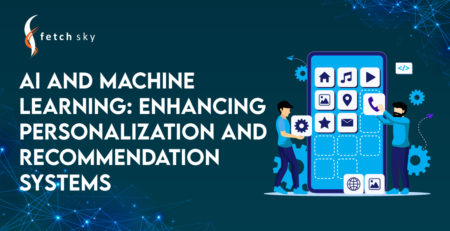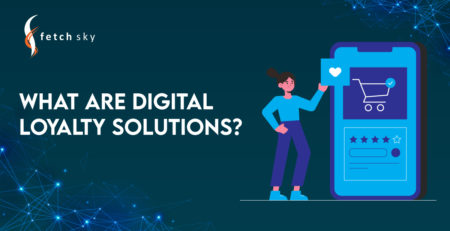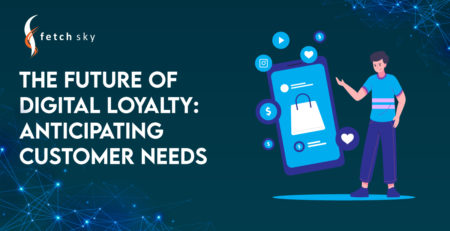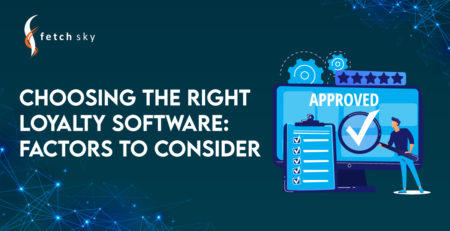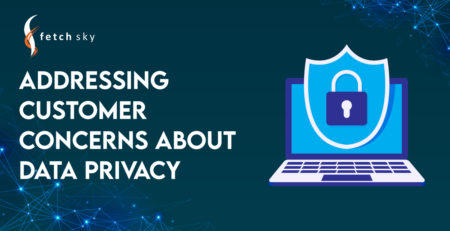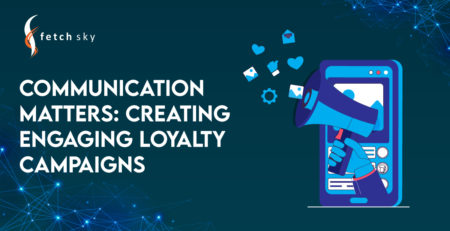The Ultimate Guide to Digital Loyalty Solutions for Businesses
Creating memorable online experiences is the golden rule for customer retention. Engaging new and existing customers with interactive programs provides the best chances of repeat purchases. This concept applies to B2B organizations just like other businesses.
In today’s dynamic and ever-evolving business landscape, the importance of customer loyalty cannot be overstated. As businesses strive to stand out amidst fierce competition, building lasting relationships with customers has become a strategic imperative for sustainable growth and success. Gone are the days of traditional loyalty programs confined to physical cards and stamp collections. In the digital era, businesses are harnessing the power of technology and data to create sophisticated digital loyalty solutions that transcend the boundaries of conventional loyalty initiatives.
Welcome to our comprehensive pillar page, where we present “The Ultimate Guide to Digital Loyalty Solutions for Businesses.” This extensive resource is designed to equip businesses of all sizes with the knowledge and insights needed to thrive in the digital loyalty landscape. Whether you are just beginning to explore loyalty strategies or seeking to optimize existing programs, this guide will serve as your roadmap to creating compelling digital loyalty experiences that inspire customer loyalty, drive engagement, and fuel long-term growth.
What Are Digital Loyalty Solutions?
Digital loyalty solutions refer to customer retention and rewards programs that harness the power of technology and digital platforms to engage customers, reward their loyalty, and incentivize repeat business. Unlike their physical counterparts, digital loyalty programs offer more flexibility, personalization, and real-time interactions, allowing businesses to create tailored experiences that resonate with individual customers.
You can read our in-depth Blog on this topic by clicking here.
The Benefits of Implementing Digital Loyalty Programs
Implementing digital loyalty programs can yield a wide range of benefits for businesses:
- Enhanced Customer Retention: A well-designed loyalty program fosters repeat purchases and customer loyalty, leading to increased customer retention rates.
- Increased Customer Engagement: Personalized rewards and interactive features, such as gamification, drive higher customer engagement and participation in loyalty initiatives.
- Data Collection and Customer Insights: Digital loyalty solutions provide valuable customer data, enabling businesses to understand customer behavior and preferences for data-driven decision-making.
- Competitive Advantage and Brand Differentiation: A compelling loyalty program can set businesses apart from competitors and attract new customers through positive word-of-mouth and referrals.
You can read our in-depth Blog on this topic by clicking here.
How Digital Loyalty Solutions Can Boost Customer Retention
Customer retention is a key factor in long-term business success. Digital loyalty solutions can significantly impact customer retention by:
- Tailoring Rewards and Incentives: Customizing rewards based on individual preferences and past behavior makes customers feel valued and appreciated.
- Engaging Gamification Techniques: Implementing gamification elements, such as challenges, badges, and leaderboards, creates a sense of achievement and motivates customers to participate in the loyalty program regularly.
- Personalized Communication: Using customer data to deliver personalized communication and offers makes customers feel understood, strengthening their emotional connection with the brand.
- Measuring and Optimizing Retention Rates: Data analytics enable businesses to measure and optimize the effectiveness of loyalty programs, ensuring continuous improvement and long-term success.
You can read our in-depth Blog on this topic by clicking here.
Understanding the Core Components of Digital Loyalty Solutions
Customer Loyalty Rewards: Building an Attractive Loyalty Program
A successful loyalty program starts with attractive customer loyalty rewards. Businesses need to design rewards that align with their brand and resonate with their target audience. Reward options may include:
- Tiered Rewards: Offering different levels of rewards based on customer loyalty tiers encourages customers to progress and unlock more valuable benefits.
- Exclusive Offers: Providing exclusive discounts or promotions for loyal customers creates a sense of privilege and exclusivity.
- Cashback or Points Systems: Implementing cashback or points systems allows customers to accumulate rewards for future use, driving repeat purchases.
- Social Media Interactions: Rewarding customers for engaging with the brand on social media encourages user-generated content and increases brand visibility.
You can read our in-depth Blog on this topic by clicking here.
Gamification Techniques to Enhance User Engagement
Gamification techniques add an element of fun and excitement to loyalty programs, increasing customer engagement and retention:
- Challenges and Missions: Designing challenges or missions that customers can complete to earn rewards creates a sense of accomplishment and encourages continued participation.
- Badges and Leaderboards: Recognizing and rewarding customer achievements with badges and displaying leaderboards fosters healthy competition among customers.
- Interactive Contests: Hosting interactive contests with appealing rewards boosts customer engagement and encourages them to interact with the brand regularly.
- Loyalty-Linked Games: Creating loyalty-linked games within the mobile app or website entertains customers while providing incentives for participation.
You can read our in-depth Blog on this topic by clicking here.
Personalization in Digital Loyalty Solutions: Creating Tailored Experiences
Personalization is a key factor in making customers feel valued and understood. Digital loyalty solutions can be tailored to individual preferences and behavior:
- Data-Driven Personalization: Utilizing customer data, such as purchase history and preferences, allows businesses to customize rewards and offers for each customer.
- Targeted Recommendations: Providing personalized product recommendations based on past purchases and preferences improves the relevance of loyalty program offerings.
- Personalized Communication: Sending targeted messages and offers to customers based on their interaction history fosters a deeper emotional connection with the brand.
- Customizable Experiences: Allowing customers to choose from a range of reward options or create personalized bundles gives them a sense of control and ownership.
You can read our in-depth Blog on this topic by clicking here.
Integrating Digital Loyalty Solutions with Websites and Apps
Seamless Integration: How to Implement Loyalty Solutions on Websites
A seamless integration of loyalty solutions on websites ensures a user-friendly experience for customers:
- Loyalty Program Widgets: Placing loyalty program widgets prominently on the website’s homepage or checkout page makes it easy for customers to join or access the program.
- User Interface and Navigation: Designing an intuitive user interface and navigation flow ensures that customers can easily find information about the loyalty program and understand how it works.
- E-commerce Platform Integration: Integrating the loyalty program with the e-commerce platform enables customers to earn and redeem rewards seamlessly during the checkout process.
- Performance Tracking: Implementing tracking mechanisms to monitor the loyalty program’s performance allows businesses to evaluate its effectiveness and identify areas for improvement.
You can read our in-depth Blog on this topic by clicking here.
Unlocking Mobile Loyalty: Integrate Loyalty Programs into Apps
Mobile loyalty strategies are becoming increasingly important, as customers spend more time on their mobile devices:
- Mobile App Loyalty Features: Developing loyalty-specific features within the mobile app, such as push notifications and in-app promotions, enhances customer engagement.
- In-App Purchases and Redemptions: Allowing customers to earn and redeem rewards directly within the mobile app streamlines the user experience and encourages repeat usage.
- Mobile-First Loyalty Strategy: Prioritizing the mobile experience ensures that loyalty initiatives are accessible and optimized for mobile users, catering to their preferences and behaviors.
You can read our in-depth Blog on this topic by clicking here.
API Integration: Streamlining Loyalty Solutions with Business Systems
API integration streamlines the loyalty solution’s functionality and data management:
- Integrating with CRM Systems: Linking the loyalty program data with the Customer Relationship Management (CRM) system helps businesses gain a holistic view of customer interactions and preferences.
- Automating Reward Fulfillment: Automating reward fulfillment processes through API integration ensures efficient and timely delivery of rewards to customers.
- Real-Time Data Insights: Utilizing APIs to access real-time data insights enables businesses to make informed decisions and respond promptly to changing customer needs.
You can read our in-depth Blog on this topic by clicking here.
Crafting an Effective Digital Loyalty Strategy
Setting Clear Goals: Defining Objectives for Loyalty Programs
Before implementing a loyalty program, businesses must establish clear objectives and key performance indicators (KPIs):
- Identifying Customer Retention Goals: Setting specific goals for customer retention rates or increasing the frequency of repeat purchases establishes a measurable benchmark for the loyalty program’s success.
- Defining Customer Engagement Metrics: Measuring customer engagement through metrics such as active participation, redemption rates, and social media interactions provides insights into program effectiveness.
- Aligning Loyalty Strategy with Business Objectives: Ensuring that the loyalty program aligns with broader business goals and contributes to overall growth and profitability.
You can read our in-depth Blog on this topic by clicking here.
Choosing the Right Incentives for Customer Participation
Understanding customer motivations and preferences is essential when selecting the right incentives for the loyalty program:
- Rewards Alignment: Ensuring that rewards offered align with customer desires and provide genuine value to participants enhances the program’s attractiveness.
- Testing and Iteration: Regularly testing different incentive strategies and iterating based on customer feedback and performance metrics allows businesses to optimize program effectiveness.
- Seasonal and Event-Based Incentives: Offering time-sensitive incentives during peak seasons or events creates a sense of urgency and encourages immediate action.
You can read our in-depth Blog on this topic by clicking here.
Communication Matters: Creating Engaging Loyalty Campaigns
Effective communication is crucial for capturing and maintaining customer interest in the loyalty program:
- Compelling Loyalty Program Messaging: Crafting clear and compelling messages that highlight the benefits of the loyalty program and evoke a sense of exclusivity encourages customer participation.
- Multi-Channel Communication: Leveraging multiple communication channels, such as email, push notifications, and social media, ensures that the loyalty program reaches customers across various touchpoints.
- Personalization in Campaigns: Tailoring loyalty campaign messages based on customer data and preferences creates a more relevant and engaging experience for participants.
You can read our in-depth Blog on this topic by clicking here.
Data-Driven Insights for Optimizing Loyalty Programs
Leveraging Customer Data: Understanding Behavior and Preferences
Customer data plays a vital role in understanding customer behavior and preferences:
- Data Collection and Privacy: Implementing ethical data collection practices and addressing customer data privacy concerns foster trust and confidence among program participants.
- Segmentation and Profiling: Segmenting customers based on demographics, purchase history, and engagement levels allows businesses to personalize loyalty offerings and communications.
- Identifying Opportunities for Personalization: Analyzing customer data helps businesses identify specific areas where personalization can drive higher engagement and satisfaction.
You can read our in-depth Blog on this topic by clicking here.
Analytics and Metrics: Measuring the Success of Loyalty Programs
Measuring the success of a loyalty program requires the tracking of key metrics and performance indicators:
- Key Loyalty Program Metrics: Tracking metrics such as customer retention rate, redemption rate, customer lifetime value (CLV), and customer satisfaction provides valuable insights into program performance.
- Analyzing Customer Engagement and Interactions: Monitoring customer interactions with the loyalty program helps identify areas for improvement and engagement optimization.
- Tracking ROI and Program Performance: Evaluating the return on investment (ROI) and assessing the overall impact of the loyalty program on revenue and profitability.
You can read our in-depth Blog on this topic by clicking here.
Identifying Patterns: How to Use Data to Improve Loyalty Offerings
Analyzing customer journey data can reveal patterns and trends that lead to customer churn or increased loyalty:
- Churn and Attrition Analysis: Identifying factors contributing to customer churn and attrition allows businesses to address pain points and improve loyalty offerings.
- Data-Driven Enhancements: Using customer data to make informed enhancements and updates to the loyalty program ensures that it remains relevant and effective over time.
- Continuous Improvement and Iterative Approach: Embracing a culture of continuous improvement through iterative testing and optimization enables businesses to stay ahead of changing customer needs and preferences.
You can read our in-depth Blog on this topic by clicking here.
Building Customer Engagement through Digital Loyalty Solutions
The Power of Push Notifications: Driving Customer Action
Push notifications are a powerful tool for driving customer action and engagement:
- Timely and Relevant Messaging: Delivering push notifications with timely and relevant messages, such as limited-time offers and personalized rewards, encourages immediate response and action.
- Segmenting Push Notifications: Segmentation enables businesses to send targeted push notifications to specific customer segments, ensuring that the messages resonate with the recipients.
- Avoiding Notification Fatigue: Carefully managing push notification frequency and content prevents customers from feeling overwhelmed and opting out of receiving notifications.
You can read our in-depth Blog on this topic by clicking here.
Social Media Integration: Using Platforms to Boost Loyalty Program Awareness
Leveraging social media platforms can significantly increase awareness and engagement with loyalty programs:
- User-Generated Content and Contests: Encouraging customers to create user-generated content related to the loyalty program and hosting contests and challenges boosts program visibility.
- Influencer Marketing and Brand Advocacy: Collaborating with influencers and brand advocates who promote the loyalty program to their followers extends its reach and credibility.
- Measuring Social Media Impact: Monitoring social media interactions and engagements related to the loyalty program provides valuable insights into its effectiveness and impact on brand perception.
You can read our in-depth Blog on this topic by clicking here.
Referral Programs: Harnessing the Power of Word-of-Mouth Marketing
Referral programs tap into the power of word-of-mouth marketing to attract new customers:
- Incentivizing Advocates and New Customers: Offering rewards to both advocates and referred customers motivates existing customers to refer others, driving new customer acquisition.
- Creating Viral Loops: Designing referral programs with built-in viral loops amplifies referral reach and exponentially increases the program’s impact.
- Referral Tracking and Reward Fulfillment: Implementing a seamless process for tracking referrals and fulfilling rewards ensures a positive experience for both advocates and new customers.
You can read our in-depth Blog on this topic by clicking here.
Overcoming Challenges in Digital Loyalty Implementations
Addressing Customer Concerns about Data Privacy
As businesses collect customer data for loyalty programs, addressing data privacy concerns becomes critical:
- Building Trust and Transparency: Clearly communicating data privacy policies and how customer data will be used builds trust with program participants.
- Complying with Data Protection Regulations: Ensuring compliance with data protection regulations and obtaining customer opt-in consent for data usage safeguards customer privacy.
- Data Security and Breach Prevention: Implementing robust data security measures protects customer data from unauthorized access and potential breaches.
You can read our in-depth Blog on this topic by clicking here.
Tackling Technological Hurdles in Loyalty Solution Integrations
Integrating digital loyalty solutions with existing business systems may pose technological challenges:
- Legacy Systems and Loyalty Modernization: Overcoming limitations posed by legacy systems and modernizing loyalty solutions ensures seamless integration and optimal performance.
- Partnering with Reliable Technology Providers: Collaborating with reputable technology providers ensures smooth implementation and ongoing support for the loyalty program.
- Continuous Updates and Upgrades: Staying current with technology updates and enhancements keeps the loyalty program efficient and in line with evolving customer expectations.
You can read our in-depth Blog on this topic by clicking here.
Scaling Loyalty Programs for Businesses of All Sizes
Tailoring loyalty strategies to suit businesses of different sizes is essential:
- Adapting Loyalty Strategies for Small Businesses: Implementing cost-effective loyalty solutions and focusing on community-building initiatives are vital for small businesses.
- Scaling Loyalty Solutions for Enterprise-Level Companies: Implementing scalable and robust loyalty systems to accommodate a larger customer base is essential for enterprise-level companies.
- Balancing Scalability and Personalization: Striking the right balance between scalability and personalized customer experiences ensures a consistent and delightful loyalty journey for all customers.
You can read our in-depth Blog on this topic by clicking here.
Success Stories: Real-Life Examples of Effective Digital Loyalty Solutions
Leveraging Technology to Drive Customer Loyalty: Real-World Success Stories
Case Study 1: Revitalizing Loyalty with Mobile Apps: How Starbucks Re-Engaged Casual Customers
In this case study, we examine how Starbucks successfully implemented a digital loyalty program that led to a significant increase in customer retention. We explore the strategies they used, the challenges they faced, and the lessons that other businesses can learn from their success.
Case Study 2: How Sephora’s Clienteling Program Cultivated Loyal Advocates
Sephora’s loyalty journey is explored in this case study, highlighting how they fostered brand advocacy through their digital loyalty solutions. We analyze their brand advocacy strategies, the impact on customer loyalty, and the overall effect on brand perception.
Case Study 3: How Starbucks’ Gamified App Boosted Loyalty Engagement
Starbucks’ approach to driving revenue growth through gamified loyalty programs is examined in this case study. We dive into the specific gamification elements they implemented, the measured impact on revenue, and the return on investment achieved.
To read these stories in-depth, click here.
Trends and Innovations in Digital Loyalty Solutions
AI and Machine Learning: Enhancing Personalization and Recommendation Systems
As technology advances, AI and machine learning are playing a vital role in loyalty programs:
- Personalized Recommendations: Utilizing AI algorithms to deliver personalized product recommendations based on customer preferences and behaviors enhances the relevance of loyalty rewards.
- Predictive Analytics: Leveraging machine learning to predict customer behavior and anticipate customer needs helps businesses proactively tailor loyalty offerings.
- Chatbots and Virtual Assistants: Integrating AI-powered chatbots and virtual assistants within the loyalty program provides immediate support and enhances the customer experience.
You can read the in-depth blog on this topic by clicking here.
Blockchain and Loyalty Programs: Creating Secure and Transparent Rewards
Blockchain technology offers a novel way to secure and track loyalty rewards:
- Decentralized Reward System: Using blockchain allows businesses to create a decentralized and tamper-resistant reward system, providing customers with greater trust and confidence in the loyalty program.
- Transparent Transactions: The transparency of blockchain technology enables customers to track and verify their reward transactions, ensuring the legitimacy of earned rewards.
- Tokenized Loyalty Points: Implementing loyalty points as blockchain tokens allows for seamless cross-platform redemption and transferability.
You can read the in-depth blog on this topic by clicking here.
The Future of Digital Loyalty: Anticipating Customer Needs
The landscape of loyalty programs is constantly evolving:
- Omnichannel Integration: The future of loyalty programs lies in seamless omnichannel integration, providing customers with consistent experiences across all touchpoints.
- Augmented Reality (AR) and Virtual Reality (VR) Experiences: Integrating AR and VR elements into loyalty programs offers innovative and immersive customer experiences.
- Environmental and Social Impact: Customers increasingly value businesses that prioritize sustainability and social responsibility, leading to loyalty programs with a focus on these aspects.
You can read the in-depth blog on this topic by clicking here.
Implementing Digital Loyalty Solutions: Step-by-Step Guide for Businesses
Assessing Your Business’s Loyalty Needs: Identifying Target Audience and Goals
This step-by-step guide helps businesses assess their unique loyalty needs:
- Customer Segmentation: Identifying target customer segments allows businesses to tailor loyalty offerings to specific customer groups.
- Defining Loyalty Program Objectives: Setting clear objectives and KPIs ensures that the loyalty program aligns with broader business goals.
- Assessing Technology and Resource Requirements: Evaluating existing technology capabilities and resource allocation helps plan for a successful implementation.
You can read the in-depth blog on this topic by clicking here.
Choosing the Right Loyalty Software: Factors to Consider
The selection of the right loyalty software is critical to the success of any digital loyalty solution:
- Scalability and Flexibility: Choosing software that can scale with business growth and adapt to changing needs ensures a long-term investment.
- Integration Capabilities: Ensuring that the chosen software can seamlessly integrate with existing systems and platforms avoids disruptions during implementation.
- Data Security and Compliance: Prioritizing data security and compliance with data protection regulations protects both customer information and the business’s reputation.
You can read the in-depth blog on this topic by clicking here.
Implementing Loyalty Solutions: Best Practices and Common Pitfalls
To ensure a smooth implementation process, businesses must be aware of best practices and common pitfalls:
- Cross-functional collaboration: Engaging stakeholders from different departments, such as marketing, IT, and customer service, ensures a holistic approach to implementation.
- Employee Training and Customer Onboarding: Providing thorough training for employees and clear onboarding for customers ensures a seamless loyalty program experience.
- Ongoing Monitoring and Optimization: Continuously monitoring program performance and collecting customer feedback allows for timely adjustments and improvements.
You can read the in-depth blog on this topic by clicking here.
Summary
By embracing digital loyalty solutions, businesses can cultivate unwavering customer loyalty, foster brand advocacy, and elevate their competitive edge. The benefits of implementing loyalty programs are profound, from increased customer retention rates to enhanced customer engagement and the collection of valuable customer data for informed decision-making.
Understanding the core components of digital loyalty solutions, including customer loyalty rewards, engaging gamification techniques, and personalized experiences, is the foundation upon which a successful loyalty program is built. Seamless integration with websites and apps, along with API integration, empowers businesses to deliver a seamless and unified loyalty experience across various touchpoints, fostering greater customer satisfaction.
Crafting an effective digital loyalty strategy involves setting clear goals, choosing the right incentives, and engaging customers through compelling loyalty campaigns. Data-driven insights allow businesses to optimize loyalty programs continuously, identify customer behavior patterns, and drive continuous improvement.
Real-life success stories and case studies have demonstrated the transformative impact of digital loyalty solutions, from significant increases in customer retention to revenue growth and brand advocacy. As businesses look to the future, trends and innovations such as AI, machine learning, and blockchain present exciting opportunities to enhance personalization and create secure and transparent loyalty rewards.
For businesses embarking on their journey towards implementing digital loyalty solutions, our step-by-step guide provides actionable insights and best practices. Assessing unique loyalty needs, selecting the right software as Digital Loyalty Solutions, and ensuring seamless implementation pave the way for a successful loyalty program that delights customers and drives results.
Conclusion
Digital loyalty solutions have emerged as indispensable tools for businesses seeking to navigate the dynamic digital landscape, build lasting customer relationships, and thrive in the face of ever-evolving market challenges. By leveraging the power of technology, personalization, and data-driven insights, businesses can transform loyalty programs from transactional endeavors into customer-centric experiences that evoke genuine emotional connections. The road ahead for businesses is one of continuous innovation and customer-centricity, and by embracing digital loyalty solutions, they embark on a transformative journey that unlocks the potential for sustainable growth, brand loyalty, and enduring success in the digital age. So, let us take this journey together, embracing the power of digital loyalty solutions to shape a future where businesses and customers thrive in harmony, forging strong bonds that transcend transactions and build lasting loyalty.


